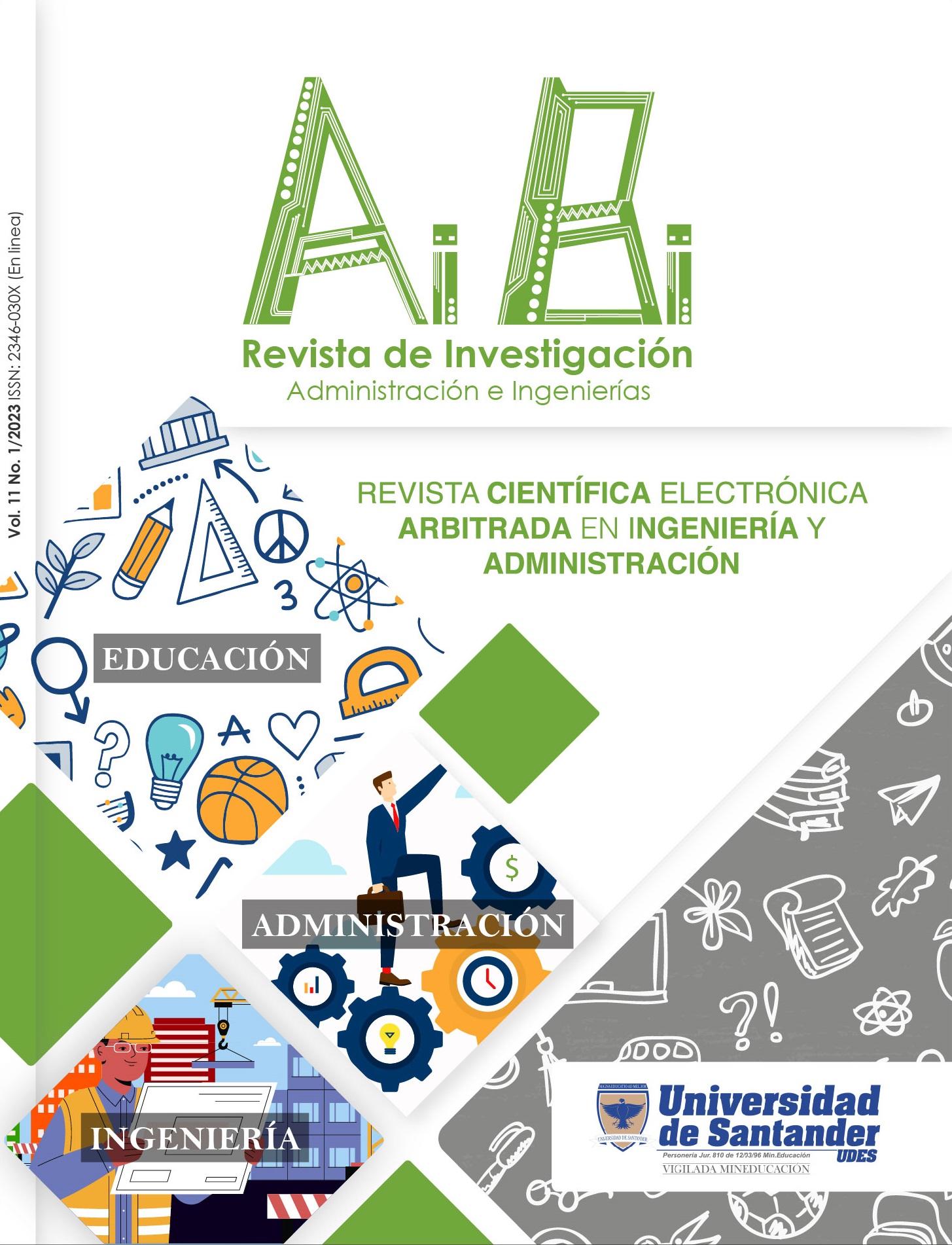Treatment of acid mine drainage using filters made from steel dust
DOI:
https://doi.org/10.15649/2346030X.3053Keywords:
steel-making dust, mine acid drainage, neutralization, filters, ADM treatmentAbstract
The treatment of acid mine drainage-AMD is necessary to mitigate the environmental impacts generated in the mining industries, because an inadequate and inefficient treatment system can potentiate a risk to both human health and the environment. In order to promote an innovative and economic method for the treatment of AMD aimed at neutralizing its pH, seven filters were built with steel-making dust and other materials, following the Design Thinking methodology. The results of the investigation showed a neutralization of the pH of a filtered HCl acid solution for twenty days in the built prototypes. The main result of the study showed that the filters built with steel-making dust can neutralize the pH of ADM, a consequence of the presence of calcareous material.
References
Gallardo, D., et al. (2013). Chemical – physical evaluation of the superficial waters in areas with miner-metallurgic activity in Santa Lucia, Pinar del Rio. In: Farfán, H., Corvea, J.L., de Bustamente, I. y LaMoreaux, J.W. (Eds.), Management of water resources in protected areas (pp. 293-300). Springer.
Gallardo Martínez, D., et al. (2020). Drenaje ácido de minas y su influencia en ecosistemas asociados al yacimiento Santa Lucía, Cuba. Revista Iberoamericana Ambiente & Sustentabilidad, 3(2), 67-81. https://doi.org/10.46380/rias.v3i2.79.
Organización de las naciones unidas. (1987). Our common future. The world commission on environment and development.
Akcil A. y Koldas S. (2006). Acid Mine Drainage (AMD): causes, treatment and case studies. Journal of cleaner production 12-13(14), 1139-1145.
Wu Y. et al. (2005). Feasibility of reflectance spectroscopy for the assessment of soil mercury contamination. Environmental sciense and technology 39(3), 873-878.
Kirschbaum, A. y Murray, J. (2011). Minería y aguas ácidas: contaminación y prevención. Temas BGNOA, 1, (1), 40-51.
Sanchez Rial, Jose Enrique, y Ferreira Centeno, Juan Pablo. (2016). Drenajes ácidos de Mina Alternativas de tratamiento. Revista de Medio Ambiente y Minería, (1), 20-33. http://www.scielo.org.bo/scielo.php?script=sci_arttext&pid=S2519-53522016000100003&lang=es.
Ministerio de minas y energía. (2021). Propuesta de lineamientos técnicos de política de buenas prácticas para estandarizar los procesos relacionados con presas de relaves.
Romero A. y Flores S. (2010). Reúso de relaves mineros como insumo para la elaboración de agregados de construcción para fabricar ladrillos y baldosas. Industrial data 2(13), 75-82.
Altadill, R., Andrés, A., Bruno, A., Bruno, J, Cortés, A. Díez G, Elias, X. Mañá, F. y Ripoll, E. (2009). Reciclaje de Residuos Industriales. Editorial Díaz de Santos, Madrid, España, 1138-1143.
Señas, L., et al. (2003). Impacto ambiental producido por morteros cementicios con polvos de acería. Revista Ciencia e Ingeniería, 24(3), 47-53.
Doronin, I.E. y Svyazhin, A.G. (2010). Commercial Methods of Recycling Dust from Steelmaking. Metallurgist, 54 (10), 653.
EPA. (1991). Land disposal restrictions for electric arc furnace dust (K061). http://www.epa.gov/osw/laws-regs/state/revision/frs/fr95.pdf.
Bautista, F. (1999). Introducción al estudio de la contaminación del suelo por metales pesados. Editorial de la Universidad Autónoma de Yucatán. México.
Jones, Christopher. (1982). Métodos de diseño. España. Editorial Gustavo Gili.
Sobek, A. A., Schuller, W. A., Freeman, J. R., & Smith, R. M. (1978). Field and Laboratory Methods Applicable to Overburdens and Minesoils. Environmental Protection Agency EPA, 47-50.
Karlsson , T., Räisänen, M. L., Lehtonen, M., & Alakangas, L. (2018). Comparison of static and mineralogical ARD prediction. Environmental Monitoring and Assessment. doi: https://doi.org/10.1007/s10661-018-7096-2.
Florence, K., Sapsford, D. J., Johnson, D. B., Kay, C. M., & Wolkerdofer, C. (2016). Iron-mineral accretion from acid mine drainage and its application in passive treatment. Environmental Technology. doi: https://doiorg.bibliotecavirtual.uis.edu.co/10.1080/09593330.2015.1118558.
Ministerio de Ambiente y Desarrollo Sostenible. (2015). Resolución 0631.
Downloads
Published
How to Cite
Issue
Section
Altmetrics
Downloads
License
The journal offers open access under a Creative Commons Attibution License

This work is under license Creative Commons Attribution (CC BY 4.0).












